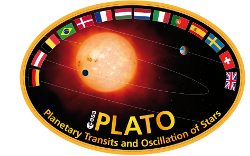Fractal analysis
Fractal analysis applied to the light curves of pulsating stars
Goal:
We are exploiting fractal analysis techniques to characterize pulsating stars, convection and magnetic activity.At present we are focused on the light curves of delta Scuti stars observed by CoRoT and Kepler satellites. Fractal properties have never been shown in these stars.
Hypothesis:
Fractal properties as a proxy of physical mechanisms operating on pulsating stars
Description:
Fractal behaviour, i.e. scale invariance in spatio-temporal dynamics, have been found to describe and model many systems in nature, in particular fluid mechanics and geophysical related geometrical objects, like the convective boundary layer of cumulus cloud fields, topographic landscapes, solar granulation patterns, and observational astrophysical time series, like light curves of pulsating stars. The main interest in the study of fractal properties in such physical phenomena lies in the close relationships they have with chaotic and turbulent dynamic. In this work we introduce some statistical tools for fractal analysis of light curves: Rescaled Range Analysis (R/S), Multifractal Spectra Analysis, and Coarse Graining Spectral Analysis (CGSA), an FFT based algorithm, which can discriminate in a time series the stochastic fractal power spectra from the harmonic one. An interesting application of fractal analysis in asteroseismology concerns the joint use of all these tools in order to develop classification criteria and algorithms for {\delta}-Scuti pulsating stars. In fact from the fractal and multi-fractal fingerprints in background noise of light curves we could infer on different mechanism of stellar dynamic, among them rotation, modes excitation and magnetic activity.
Members:
Rafael Silva Garrido
Links:
